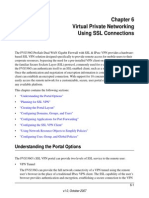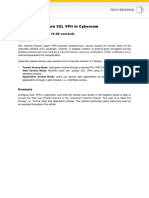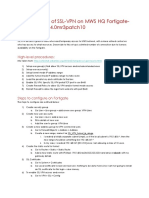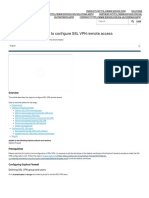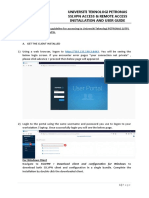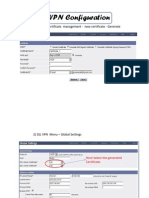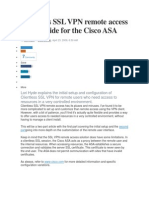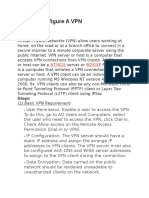0% found this document useful (0 votes)
22 views10 pagesBasic Guide SSL VPN
This document is a basic guide for configuring an SSL VPN to connect remote users to internal network resources. It outlines steps including logging into the firewall, enabling SSL VPN service, creating resource groups, configuring users and roles, testing VPN access, and customizing settings. The guide provides detailed instructions for each step to ensure successful setup and operation of the SSL VPN.
Uploaded by
markgrinduloCopyright
© © All Rights Reserved
We take content rights seriously. If you suspect this is your content, claim it here.
Available Formats
Download as PDF, TXT or read online on Scribd
0% found this document useful (0 votes)
22 views10 pagesBasic Guide SSL VPN
This document is a basic guide for configuring an SSL VPN to connect remote users to internal network resources. It outlines steps including logging into the firewall, enabling SSL VPN service, creating resource groups, configuring users and roles, testing VPN access, and customizing settings. The guide provides detailed instructions for each step to ensure successful setup and operation of the SSL VPN.
Uploaded by
markgrinduloCopyright
© © All Rights Reserved
We take content rights seriously. If you suspect this is your content, claim it here.
Available Formats
Download as PDF, TXT or read online on Scribd
/ 10






